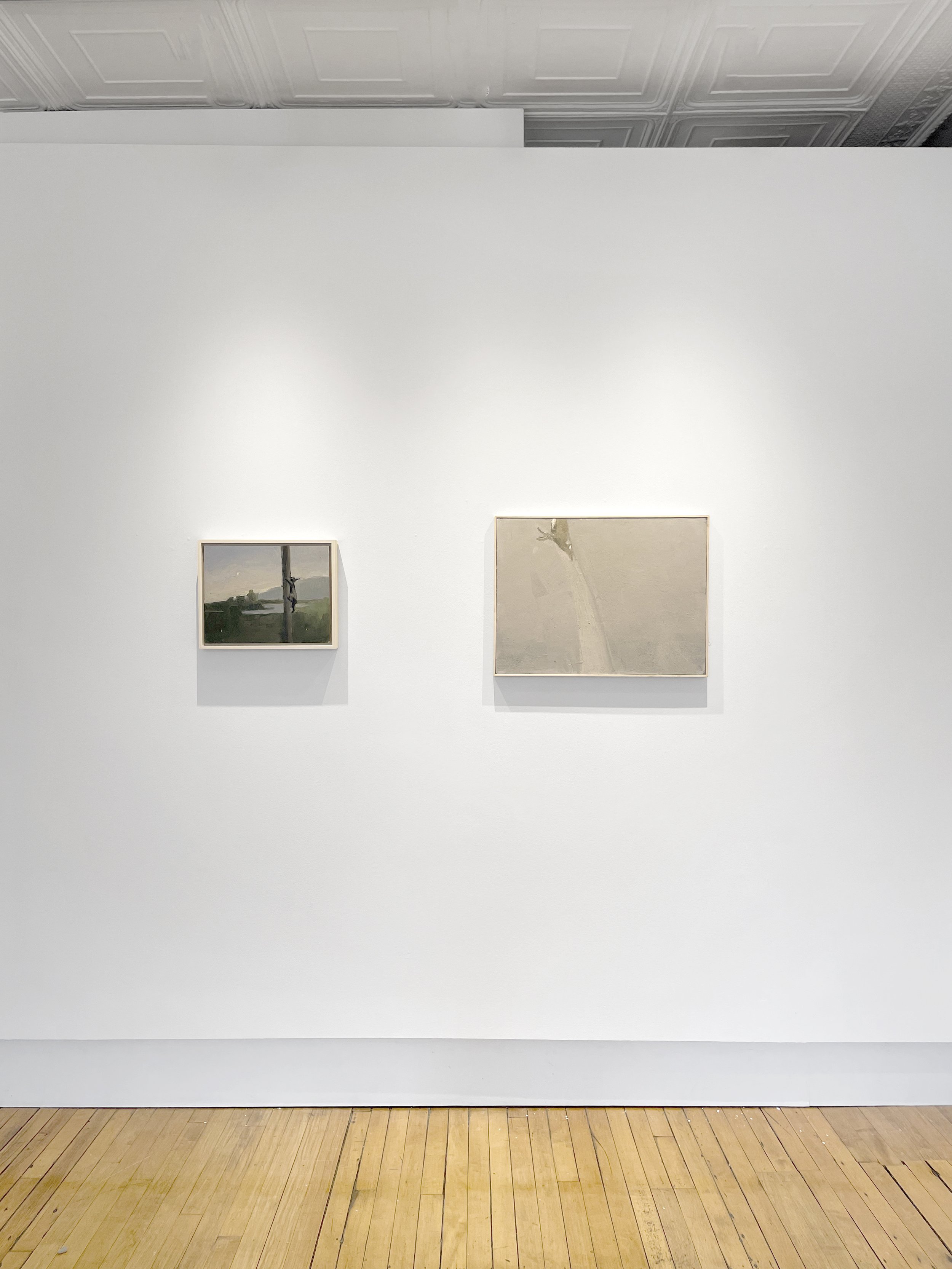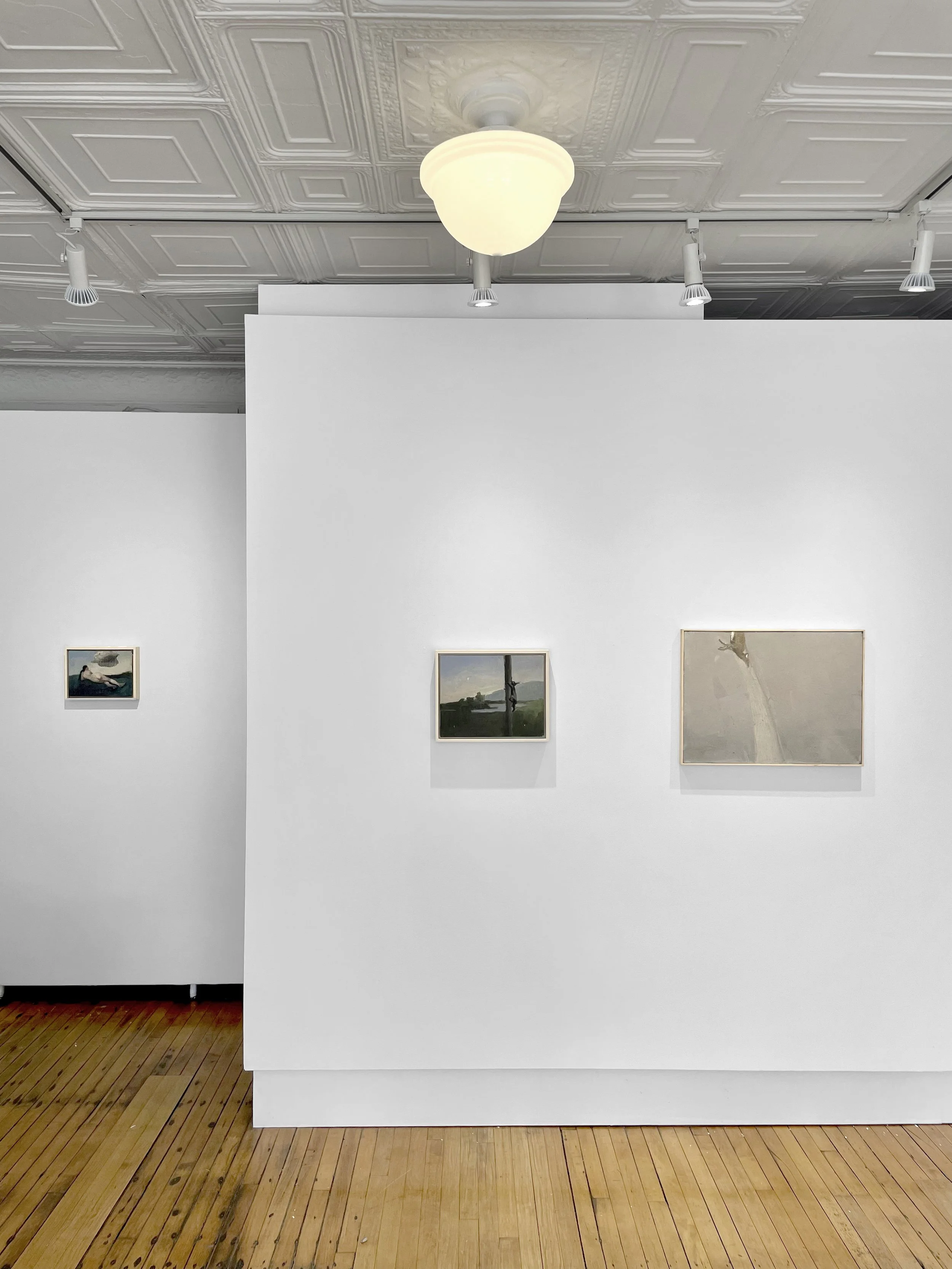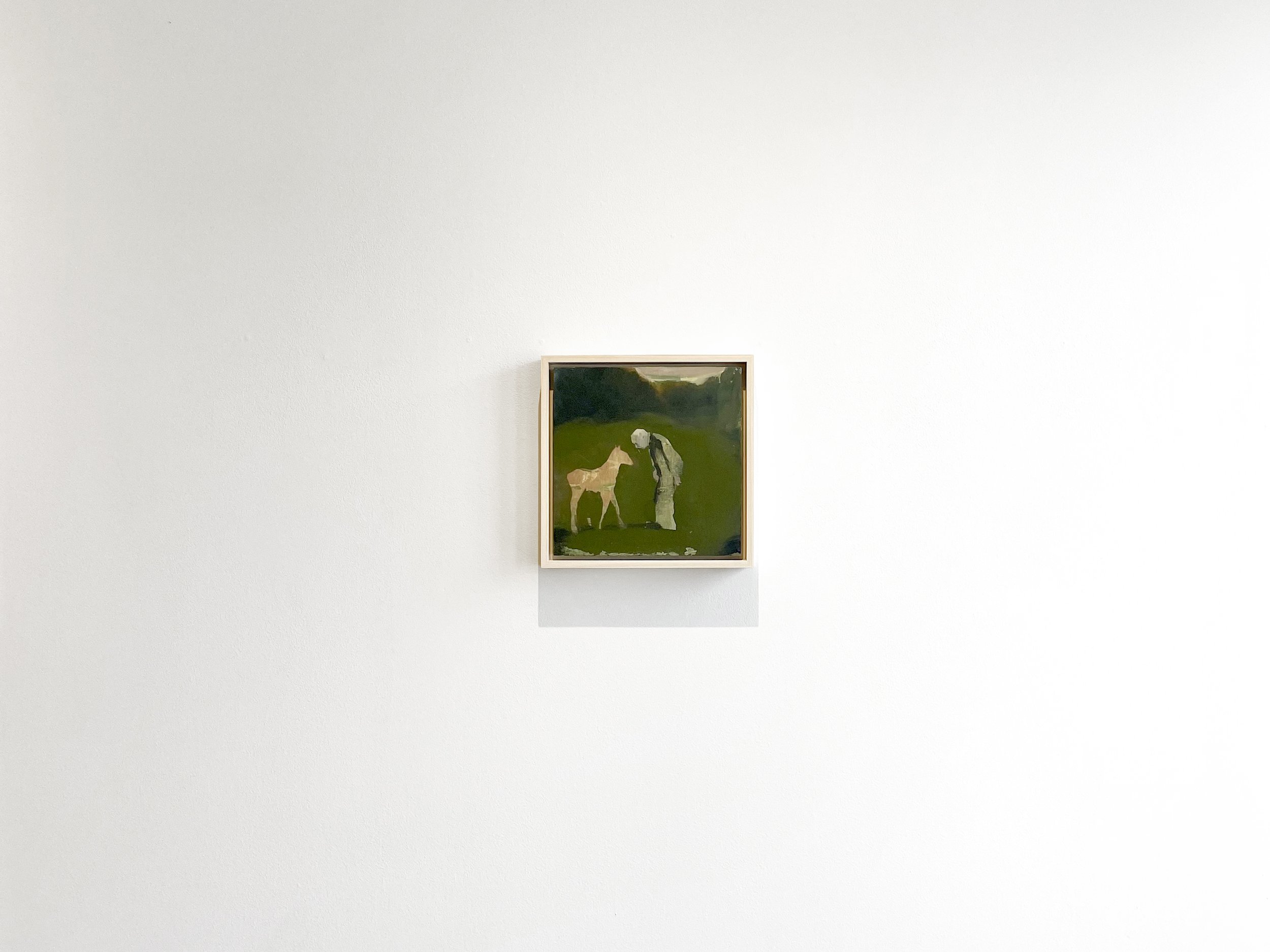Meadow
Pamela Salisbury Gallery, Hudson
May 20 – June 18, 2023
Every time I write about paintings I feel as if I’ve never written about paintings before. But I write about them all the time. Still, I struggle to make sentences that convey my impressions, to match words with feeling. Most often I’m writing about older works, so I assemble and narrate their histories to get at the complex desires that precipitated their creation. In these instances, I can assume a level familiarity with the work and focus my efforts on an argument about the centrality of its role in the artist’s larger development, or why it may benefit from an historical reappraisal. I write less frequently about new paintings, and when I do, I understand I’m working in territory even more qualitative than the malleable historical record. The job is to feed the embers as they begin to burn, marshaling the scant information available about an artist’s present biography, training, and motivations, to make a case for why these works make sense right now. When it works, the words fall away: the work is already so far ahead of the writing that the text feels secondary; an informative caption, if you’re lucky.
The task at hand is to introduce an exhibition of new paintings by Seth Becker, which will open to the public on May 20th at the Pamela Salisbury Gallery in Hudson, New York. So I’ll begin by collating the information available to me about Seth and his practice in the hope of telegraphing at least some of my feeling that these paintings are important. The facts: Seth Becker is an artist who lives and works in Wappingers Falls, New York. He moved there three years ago after spending most of his life in Queens. He received his BFA from Marymount Manhattan College, and his MFA from the New York Studio School. He works as a librarian. He paints in an attic studio during the evenings and on his days off. If that suggests the Sunday painter, we couldn’t be farther from the truth. I know him to be a quiet person with a good sense of humor. He has a deep reverence for other painters and is reading a lot of poetry of late. He is an inveterate collector of unexpected images and old postcards, particularly those known as “real photo postcards,” which reproduce snapshot imagery on postcard stock. He’s after the strange image, and his collecting practice often bleeds into his painting; I’ve seen images from these postcards provide the architecture for his compositions.
This show comprises some thirty paintings of similar size and disparate subject made over the last and year hung across two floors. Seth has titled the show “Field Music,” and it will be his third with the gallery, following “Meadow” of 2022, and “Terrarium” of 2020. When considered alongside these earlier exhibitions, it feels as if both everything and nothing has changed. What persists is his habit of making small, representational oil paintings of animals, figures, and landscapes. What has changed is their manufacture, their relative confidence, and their elegance.
The paintings gathered here share several features that endow the group with a certain coherence and worldview. Notable is their generally dark palette, which contributes in some cases to a sense of foreboding. Many scenes rendered seem to emanate from a fairy tale or a moral fable, with their imagery and iconographic simplicity evocative of such tales. Despite their darkness, a sense of sentimentality pervades these paintings: darling rabbits, misty fields. One painting depicts a dog walking a tightrope, and I find it a helpful metaphor for thinking about how sweet these works can be. It’s a high wire act, flirting with such sentimentality, but he doesn’t fall.
What I find striking about the paintings in this show is a shared sense of dislocation. Most of the works depict a subject found out of place. An inventory of characters includes a frog swimming in a bathtub, a menacing canine lurking near a campfire, a hound lost in a hedge maze, a nude woman under duress in a field, and a few rabbits leaping out of the frame. They begin to assemble a thematic concern, one that tempers the works’ initial brush with sentimentality.
But the paintings are more disparate than they are similar, and my efforts to connect them bely the unique feeling conveyed in each. No two paintings here address the same subject. There is great variety among their compositional structures, their relative level of finish, and their willingness to flirt with illegibility. Odalisques and other figurative tropes from the history of painting exist in the same context as a frog swimming around in a bathtub. Most impressive to me is the way these paintings feel pulled from a single universe despite the diversity of their rendering. Some paintings are thick with impasto, some done with a palette knife, and others still present a texture that comes from using a brayer.
All of this contributes to my impression that every time Seth starts a painting, it’s as though he’s never made a painting before. I’m familiar with the territory, albeit in different arenas. I mean this in the most wholly positive sense I can connote; he’s fumbling for new methods of modeling at every turn, following the prompts he finds in the paint, in order to arrive at a technique that effectively cradles its image. It’s this searching aspect of Seth’s work that I feel makes the strongest case for its relevance. Because I always want to see the next one. Those feelings of anticipation and excitement are always couched squarely in the present—and what is more relevant than the present—where we wait for the next postcard from a region in his mind.
– Zachary Fischman
New York, April 2023





















